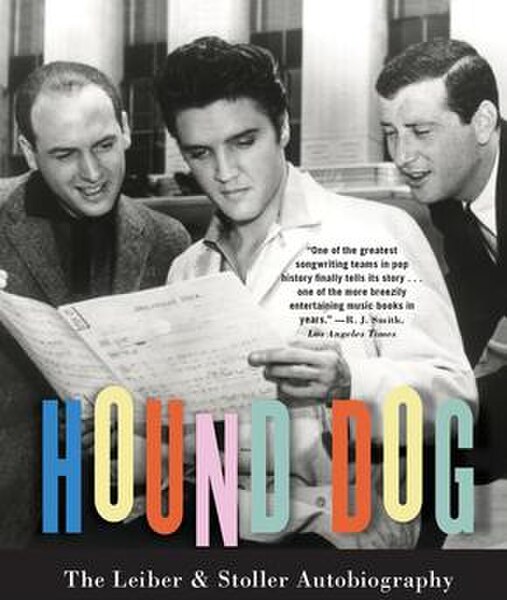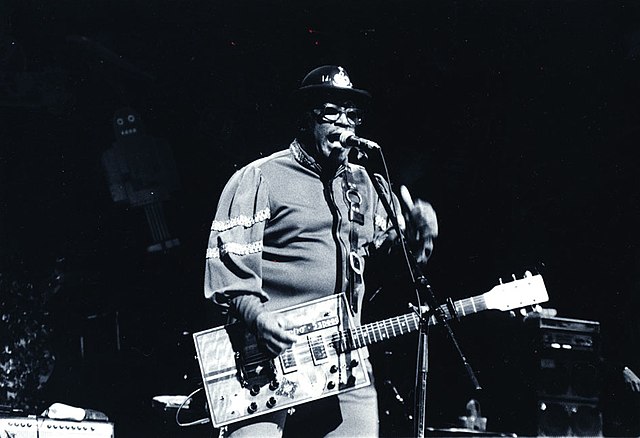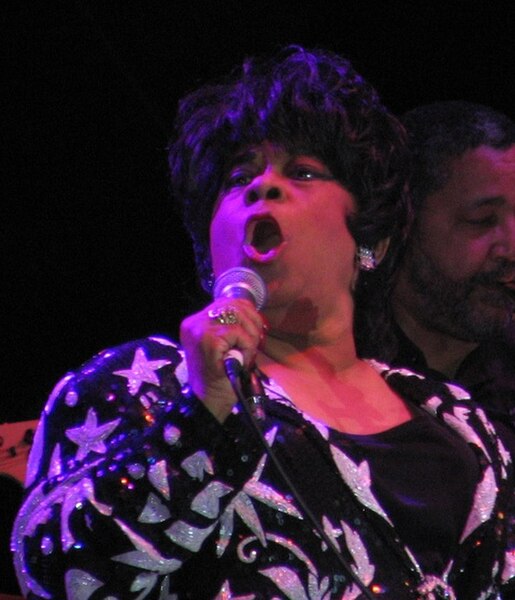Jerry Leiber and Mike Stoller
Leiber and Stoller were an American Grammy award-winning songwriting and record production duo, consisting of lyricist Jerry Leiber and composer Mike Stoller. As well as many R&B and pop hits, they wrote numerous standards for Broadway.
Mike Stoller (left) and Jerry Leiber (right) flanking Elvis Presley on the cover of Leiber and Stoller's joint autobiography, Hound Dog
Rhythm and blues, frequently abbreviated as R&B or R'n'B, is a genre of popular music that originated within African-American communities in the 1940s. The term was originally used by record companies to describe recordings marketed predominantly to African Americans, at a time when "rocking, jazz based music ... [with a] heavy, insistent beat" was becoming more popular.
In the commercial rhythm and blues music typical of the 1950s through the 1970s, the bands usually consisted of a piano, one or two guitars, bass, drums, one or more saxophones, and sometimes background vocalists. R&B lyrical themes often encapsulate the African-American history and experience of pain and the quest for freedom and joy, as well as triumphs and failures in terms of societal racism, oppression, relationships, economics, and aspirations.
Big Joe Turner in 1955
Louis Jordan in New York City, c. July 1946
Bo Diddley's "Bo Diddley beat" is a clave-based motif.
Ruth Brown was known as the "Queen of R&B".





